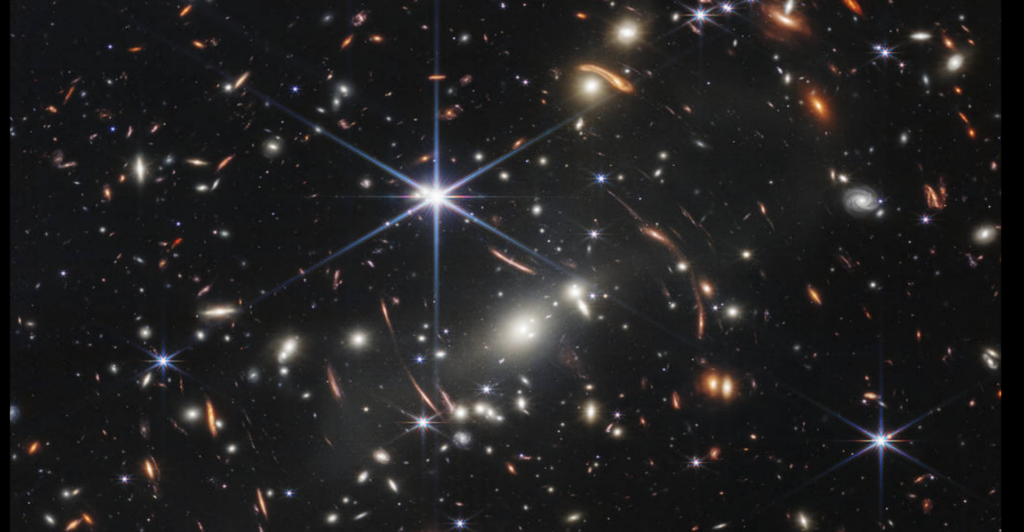American space agency NASA has shared a photo of the deepest view of our universe so far, which reveals thousands of galaxies in a tiny sliver of a vast universe, including primordial galaxies that date back 13.5 billion years.
The image, taken by NASA’s James Webb Space Telescope, has been named Webb’s First Deep Field, and pictures the galaxy cluster SMACS 0723 as it appeared 4.6 billion years ago in the most detailed way ever, according to NASA Administrator Bill Nelson.
"Webb's First Deep Field is not only the first full-colour image from the James Webb Space Telescope, it’s the deepest and sharpest infrared image of the distant universe, so far," Nelson said during an unveiling of the image by US President Joe Biden.
"This image covers a patch of sky approximately the size of a grain of sand held at arm’s length. It’s just a tiny sliver of the vast universe."
However, it still reveals thousands of galaxies, including ones that are located billions of lightyears away and the faintest objects ever observed in the infrared.

The complete image, as taken by the James Webb telescope. Credit: NASA, ESA, CSA, and STScI
In the image, distant galaxies appear as bright glowing spots, with some smeared due to the shape of the telescope's lens. Meanwhile, foreground stars appear "bright with six-pointed diffraction spikes," due to the shape of their mirrors.
It is a composite made from images at different wavelengths, totalling 12.5 hours.
Related News
- Is there anybody out there? Far-off chance of contact with aliens, says new report
- Belgian-made camera takes closest images of the sun for first time ever
This seems like a very long time to take a picture, but the Webb telescope, which took two decades to construct, was able to achieve depths at infrared wavelengths beyond the Hubble Space Telescope’s deepest fields, which took weeks to capture its images. With the naked eye or even with lesser telescopes, hardly anything can be seen.
This will help researchers to learn more about the galaxies’ masses, ages, histories, and compositions, as it expands our cosmic observation horizon by showing "primordial galaxies" that were first formed during the first hundreds of millions of years after the Big Bang (13.8 billion years ago).
Although their stars have long burned up, their light is still visible. More images will be released later in the day.

